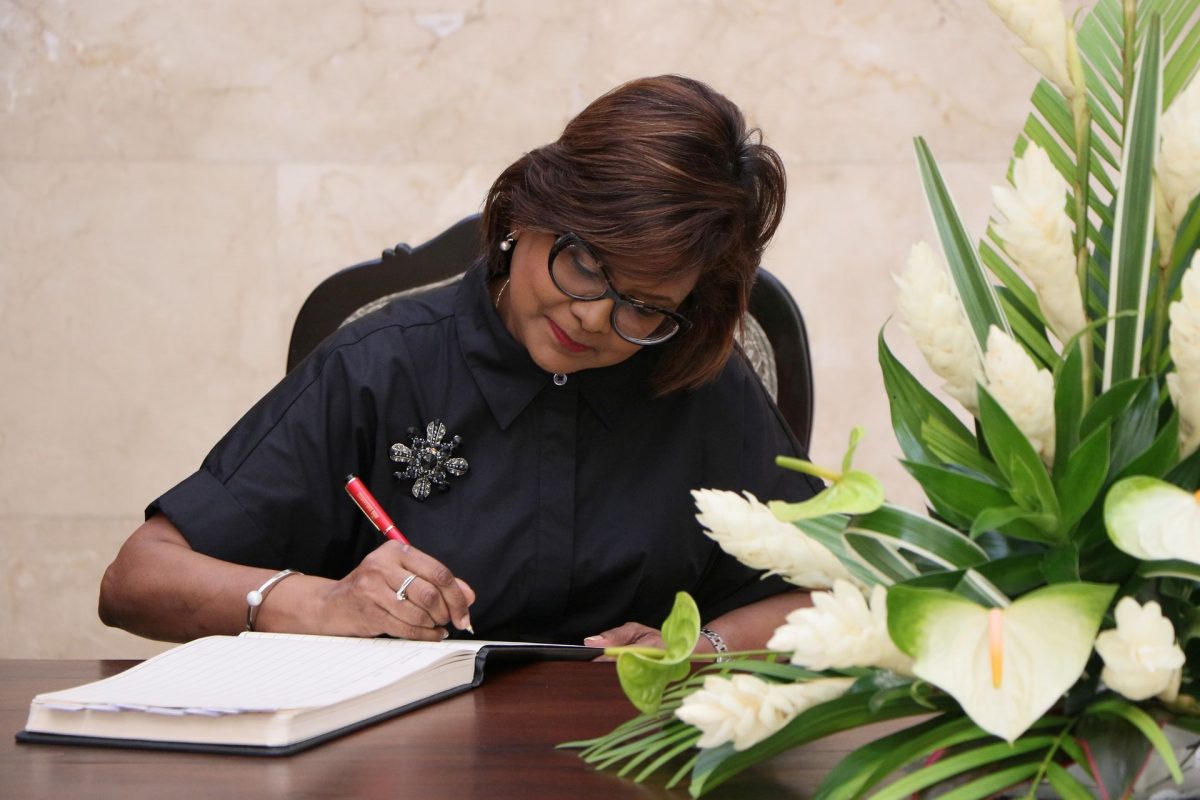(Trinidad Guardian) The State funeral for former prime minister Basdeo Panday will be held next Tuesday at the Southern Academy for the Performing Arts (SAPA), according to a reliable source.
Guardian Media was also told that no time has yet been agreed upon for the start of the service.
Panday’s body arrived yesterday at the Piarco International Airport, accompanied by his wife, Oma, and daughter, Mickela.
An official of the Trinidad and Tobago Defence Force’s (TTDF) bearing party received the body of the former prime minister and his family at the airport. The national flag was placed on the casket, which was then taken to the hearse. The body then departed with an official escort to the funeral home of the family’s choice. Speaking with Guardian Media yesterday prior to the body’s arrival, Panday’s brother, Subhas, could not yet reveal which funeral house was chosen, as he said that would be the decision of his brother’s wife and children. He also said while several Hindu pundits have offered their services for the funeral, the family is yet to decide on who will have that duty.
Meanwhile, in the capital yesterday, the condolence book in honour of Panday was placed in the Rotunda at the Red House.
President Christine Kangaloo was the first to sign the book in keeping with protocol. Panday’s family was also in attendance, including daughter, Nicola, his niece, Anuusha, and brother, Subhas Panday. Senate President Nigel de Freitas also signed the condolence book.
The condolence book will be opened to members of the public today from 1-6 pm, tomorrow from 8 am-6 pm and Monday from 8 am-6 pm.
The Ministry of National Security yesterday advised that the national flag will be flown at half-mast until the day of the funeral service.
Panday’s funeral will be the first State funeral done under Hindu rites in this country’s history.
Former protocol officer in the Office of the President, Lenore Dorset, told Guardian Media that a State funeral will not interfere with the religious aspect of the event.
“Whatever is done for a Hindu funeral would be done, it’s just given the name a State funeral because of who is involved. But the Hindu rites will follow just like Christian rites will follow for someone who is a Christian,” Dorset said.
Dorset clarified that, ideally, a State funeral is granted to someone who was the president or head of state of the country but that has now changed.
“A State funeral is a funeral which is given to a head of state but if someone wants to say they’re having a State funeral for a former president or former prime minister, it has come to be accepted. It’s not a gross error if they want to call it a State funeral, it has come to mean what it is,” Dorset added.
She said on the day of the funeral service, certain protocols must be followed with respect to the seating of guests and the arrival of dignitaries.
“Before the current Prime Minister and President arrive, everybody must be seated, and nobody should arrive after they have arrived. The Prime Minister comes before the President, the President is the highest person in the land and the highest person always arrives last. The President will be met as she comes out of her car and then taken straight to her seat and the procedure will begin,” the former protocol officer explained.
Meanwhile, Pundit Ramdath Mahase revealed some of the steps involved in Hindu burial rites that will be observed next Tuesday after the official ceremony at SAPA.
Mahase explained that the person carrying out the funeral rites on the instruction of the officiating pundit and on behalf of the body, will have to shave their head as a form or purification. That person must also refrain from alcohol and meat. The body will also be placed with its head facing in a northern direction and the feet pointed south.
A garland of flowers or Mala will be placed around the body’s neck. However, this necklace must be broken to symbolise that life has come to an end. When the body is taken to the chosen cremation site, those carrying it must stop five times before it reaches the pyre.
Pundit Mahase explained that rituals and prayers are done at each stop en route to the pyre. He added that five stops are necessary to symbolise the five senses.
After the last stop, the Mala and other flowers are removed from the body and it is placed on the pyre.
A form of worship called a Havan is then done in the name of the departed to appease the fire.
Five sticks soaked in ghee and lit with fire are then handed out to either one or five people who will circle the pyre five times while more prayers are recited. On the final lap, the sticks will be used to ignite a block of camphor that is placed in the mouth of the deceased.
Pundit Mahase said this symbolises the breaking of the bond between the body and the soul.
But he said Hinduism is rooted in the belief of reincarnation and following the cremation further rituals are held, particularly one which recites the words of the holy text, the Bhagavad Gita, praying for the new body which the soul will enter.





